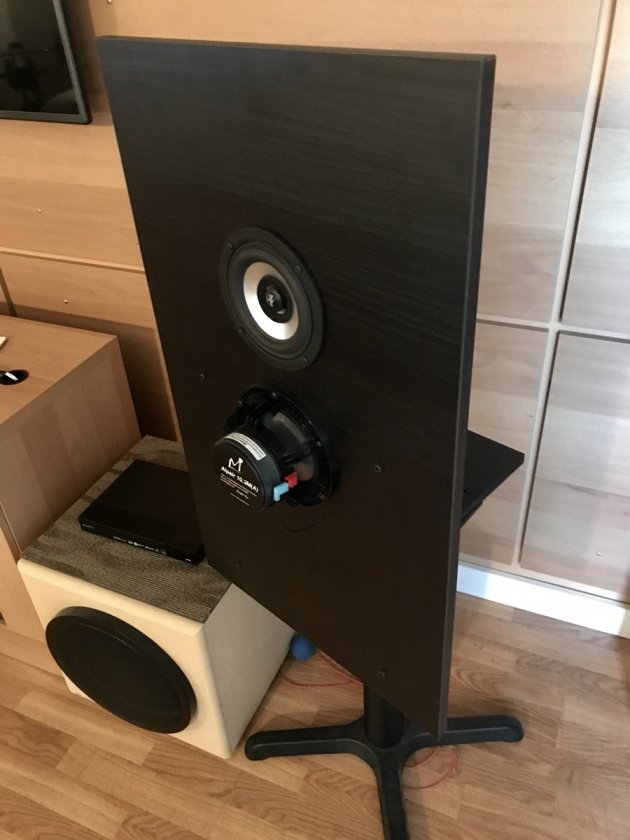Goals:
Lower intermodulation distortion / increase SPLs
Improve HF dispersion of the primary driver
Minimize Comb Filtering

Hope the following is useful for some fellow hobbyists...
I’ve spent a few weeks trying to improve upon a single Jordan Eikona driver in wide baffle. Almost all conventional attempts to supplement this driver were met with time and phase abnormalities that detracted from the original configuration. This included combining drivers with and without a crossover.
Combining two or more FR drivers can increase efficiency and lower the amount of intermodulation distortion at a given level, but can also introduce comb filtering, since full range drivers are designed to reproduce high frequencies as well. This is why you seldom see two tweeters used in tandem, unless filtered to address high frequency overlap.
In general, full range drivers excel (in part) by preserving the tonality of the original recording due to a lack of lobing that can occur at crossover frequencies; however they are also prone to higher levels of intermodulation distortion compared to duty specific drivers. When the center to center distance between drivers becomes greater than one wavelength, comb filtering and nulls can occur, along with time and phase misalignments. This typically becomes more of a problem as frequencies rise; the Jordans seem to me more prone to this than most.
In my one positive attempt to combine, comb filtering was minimized by (1) reversing the direction of the secondary driver (rather than the use of an inductor to reduce HF overlap), and (2) allowing the high frequency summation to occur as part of the reflected /secondary wave.
I have found that reversing the secondary driver and bouncing those frequencies off the rear wall appear to minimize combing while improving both the on and off axis high frequency dispersion. The downside was a minute loss of high frequency detail, possibly due to the time difference between the primary and secondary waves. The effect is heard as a slight reverberance at the highest frequencies, however this seems to outweigh other atrocities full Rangers are often accused of. The effect is similar regardless of supplementing with a tweeter or a 2nd full ranger.
In the example above, the Jordan Eikona was supplemented with a reverse mounted Mark Audio Alpair 10M, known for its extended range at the top. The Alpair was then wired with reverse polarity so both driver’s cones were moving in the same direction at the same time. This particular combination proved to be more effective than the same driver mounted conventionally, as well as dome tweeters crossed with both shallow and steep slopes (6dB – 48dB/oct).
The Eikona has nothing in the signal path, while the Alpair has a single 10 ohm resister in series, which provides level match as well as a friendlier load to the amplifier.